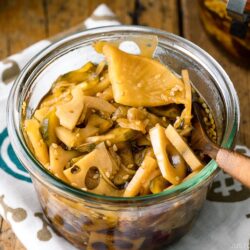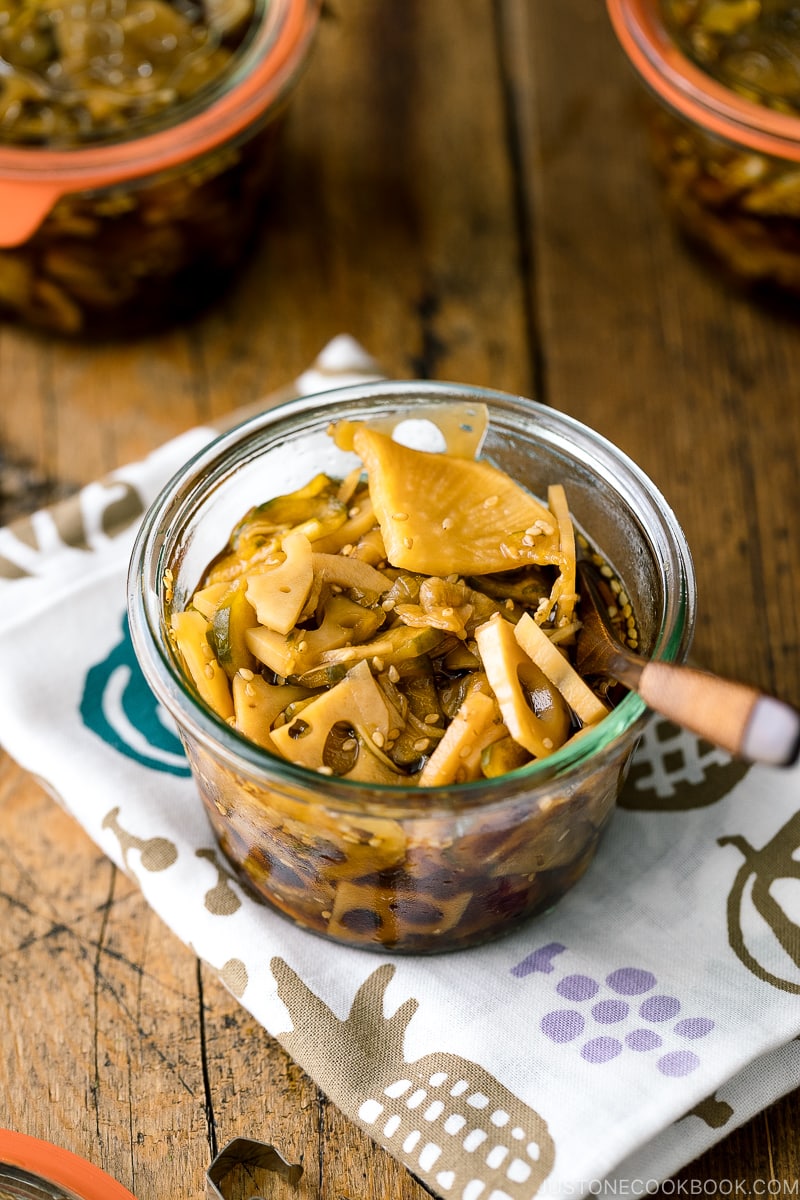
A plate of Japanese curry rice is never complete without the crunchy, crimson red pickles called fukujinzuke (福神漬け). These pickled mixed vegetables are sweet and tangy, which perfectly sets off the richness and spices of the curry sauce.
While you can easily get store-bought fukujinzuke, I like to make it from scratch in the summertime when most of the ingredients are fresh and in season. My recipe also skips the red coloring typically added to the store-bought version. Read on to learn how you can make these delicious pickles with my Homemade Fukujinzuke recipe!
What is Fukujinzuke?
Customarily served with Japanese curry, fukujinzuke (福神漬) is a type of tsukemono, or Japanese pickle. Fukujinzuke is savory, sweet, and tangy, and addictively crunchy. We love it with steamed rice and curry because it helps refresh and cleanse the palate between bites.

Easily recognizable for its eye-catching red color, fukujinzuke is a vegan recipe that contains a vegetable medley of daikon, eggplant, lotus root, cucumber, and bamboo shoots. They are cut into small pieces, salted, and pickled in a brine of soy sauce, mirin, rice vinegar, and sugar.
There are a few theories of the origin of the name “fukujinzuke.” One of the popular theories is that the pickles use 7 kinds of vegetables, hence the name fukujin-pickle as a tribute to the Seven Lucky Gods, or shichi-fukujin (七福神).
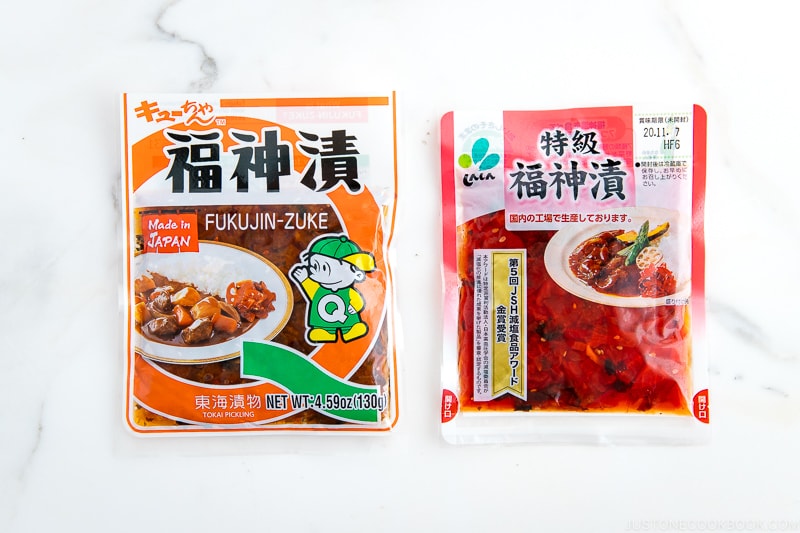
Commercial fukujinzuke typically uses food coloring to give it the signature red color. However, I prefer to leave out the coloring and focus instead on the taste and texture when making the pickles at home.
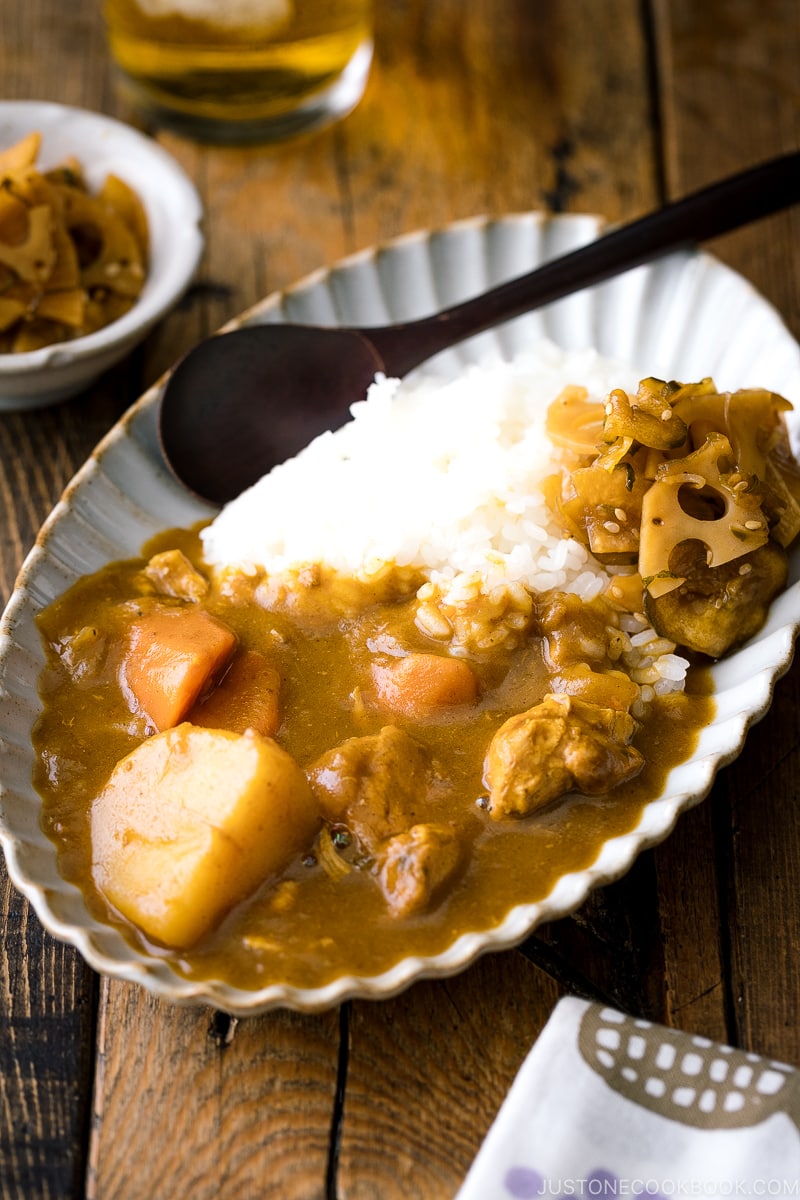
Ingredients You’ll Need for Fukujinzuke
- daikon radish
- Japanese or Persian cucumber
- lotus root (renkon)
- Japanese eggplant
- young ginger
- green shiso (perilla) leaves
- kosher salt – for sprinkling on the vegetables; I use Diamond Crystal brand
- pickling solution – soy sauce, mirin, unseasoned rice vinegar, sugar, and kombu
- white sesame seeds
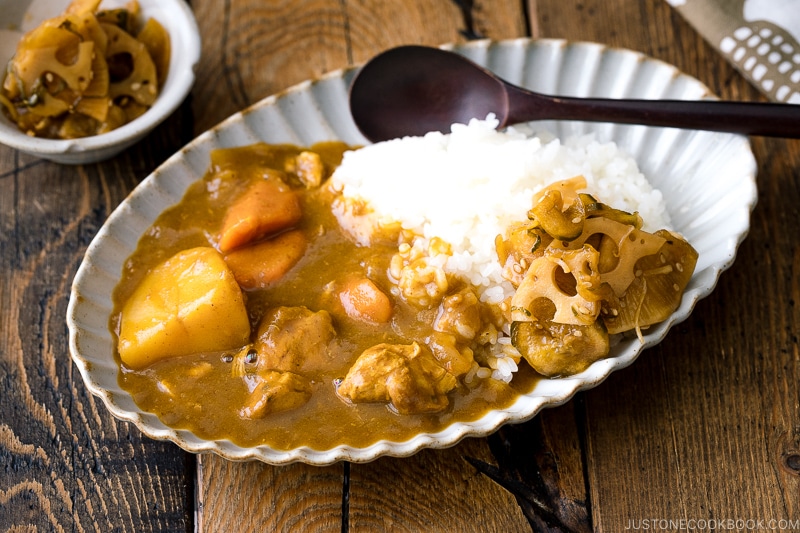
How to Make Homemade Fukujinzuke
- Cut the vegetables into thin, small pieces. Sprinkle with kosher salt to withdraw moisture from the vegetables for 20 minutes.
- Make the pickling solution by combining all the condiments. Bring it to a boil.
- Rinse the vegetables and squeeze the water out.
- Blanch the vegetables in the pickling solution for 20–30 seconds and transfer to the jars.
- Reduce the pickling liquid by simmering for 5 minutes.
- Add the solution to the vegetables and let them marinate overnight in the refrigerator. It’s now ready to enjoy.
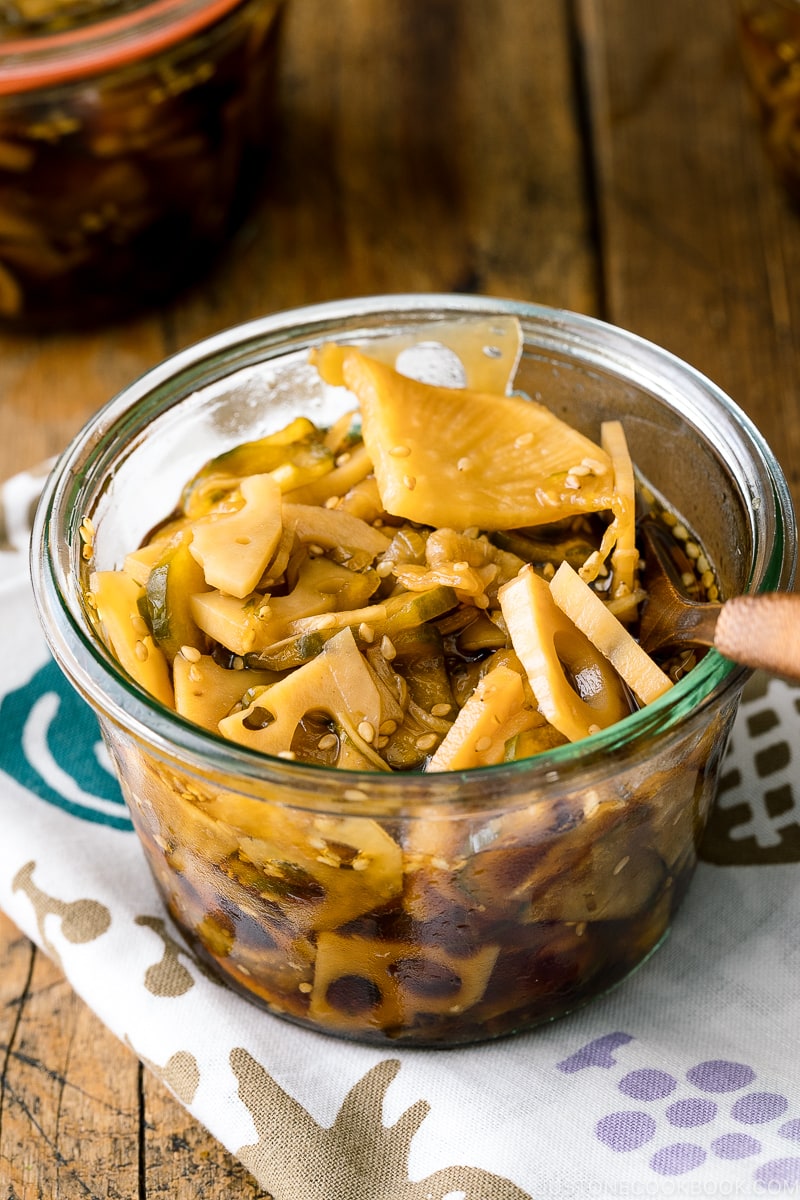
Important Tips for Making Homemade Fukujinzuke
- Cut the vegetables into small and thin slices, about 3 mm thick and less than 1 inch (2.5 cm) square. The uniform size and thickness help to cook the vegetables evenly.
- Use 3% salt of the vegetable weight to withdraw moisture out of the vegetables. You can increase up to 5%; it will be slightly saltier, but it will last longer (food safety).
- Adjust the salting and cooking time for your preferred texture. The process of salting and removing moisture from the vegetables and the cooking them determines the end texture of your fukujinzuke. I like my vegetables on the crunchier side, but you can always experiment and adjust the recipe instructions to your liking.
- Reduce the pickling liquid slightly to let the moisture evaporate so you will have a stronger pickling solution.
- It’s best to enjoy after pickling overnight.
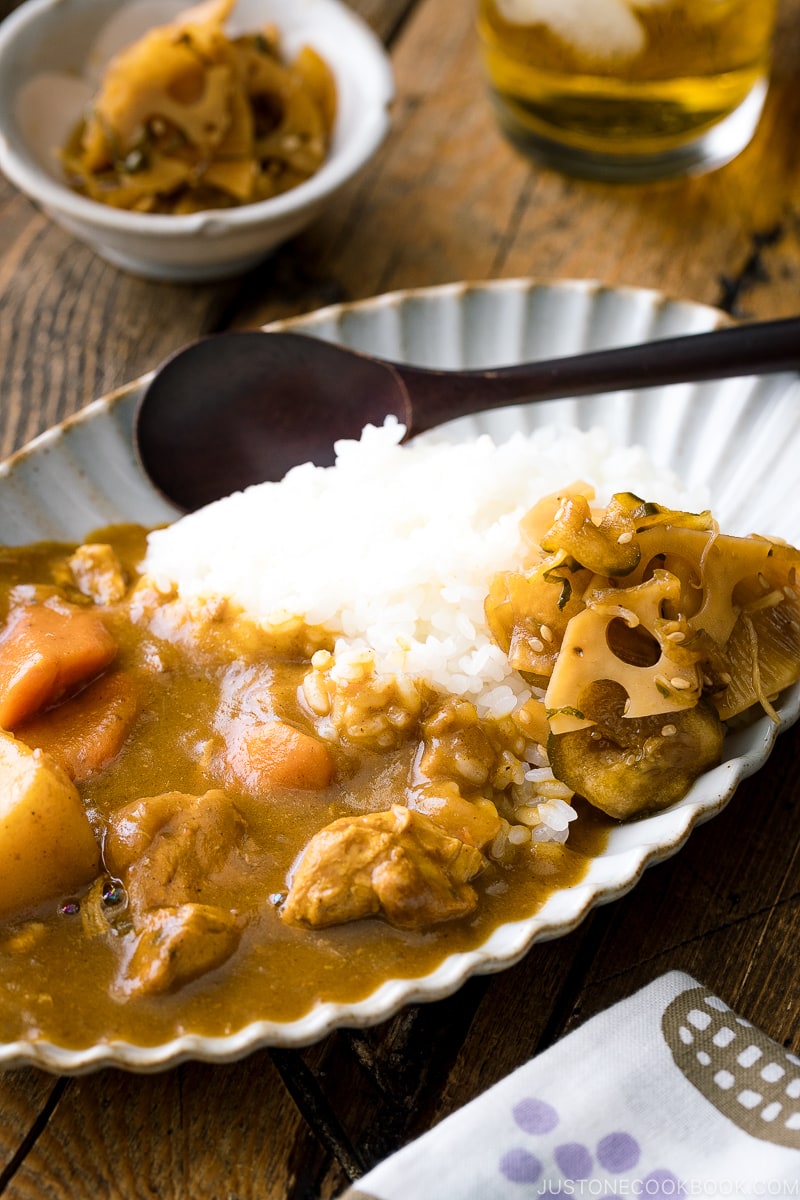
Delicious Japanese Curry Recipes
Enjoy your homemade fukujinzuke with any of these curry recipes! The pickled vegetables are delicious on their own, too, so I won’t tell if you take a few bites even without the curry or enjoy them with Ochazuke!
- Japanese Chicken Curry
- Pressure Cooker (Instant Pot) Japanese Curry
- Japanese Beef Curry
- Japanese Seafood Curry
- Japanese Tomato Curry
- Katsu Curry
- Curry Udon
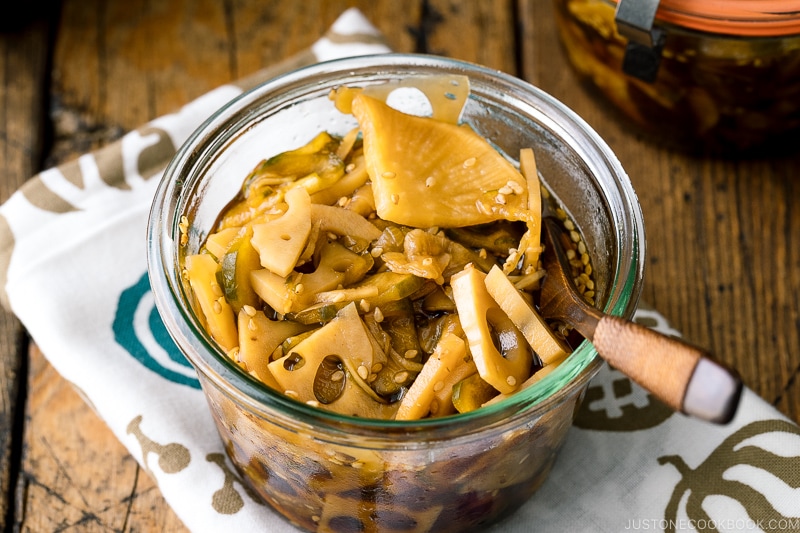
Sign up for the free newsletter delivered to your inbox and stay in touch with me on Facebook, Pinterest, YouTube, and Instagram for all the latest updates.
Homemade Fukujinzuke (Japanese Pickles for Curry)
Ingredients
- 2 inches daikon radish (9.5 oz, 270 g)
- 2 Japanese or Persian cucumbers (7.8 oz, 220 g)
- 1 lotus root (renkon) (boiled; 3.5 oz, 100 g)
- 1 Japanese eggplant (4.6 oz, 130 g)
- 1 knob young ginger (1 inch, 2.5 cm; young ginger has a mild flavor; use less for regular ginger)
- 5 shiso leaves (perilla/ooba)
- Diamond Crystal kosher salt (weigh your prepared vegetables to calculate the amount to use; you‘ll need 3% of the total vegetable weight; I used 20 g or roughly 2 Tbsp)
For the Pickling Solution
- ½ cup soy sauce
- ½ cup mirin
- 6 Tbsp rice vinegar (unseasoned) (rice vinegar is milder than other kinds of vinegar; if you substitute another type, please adjust the amount)
- ½ cup water
- 1 piece kombu (2 x 2 inches, 5 x 5 cm per piece)
- 6 Tbsp sugar
- ½ Tbsp toasted white sesame seeds
Instructions
- Before You Start: Please note that this recipe requires a marination time of overnight. Now, gather all the ingredients. Also, prepare a kitchen scale to weigh your prepared vegetables so you can calculate the amount of salt you need.
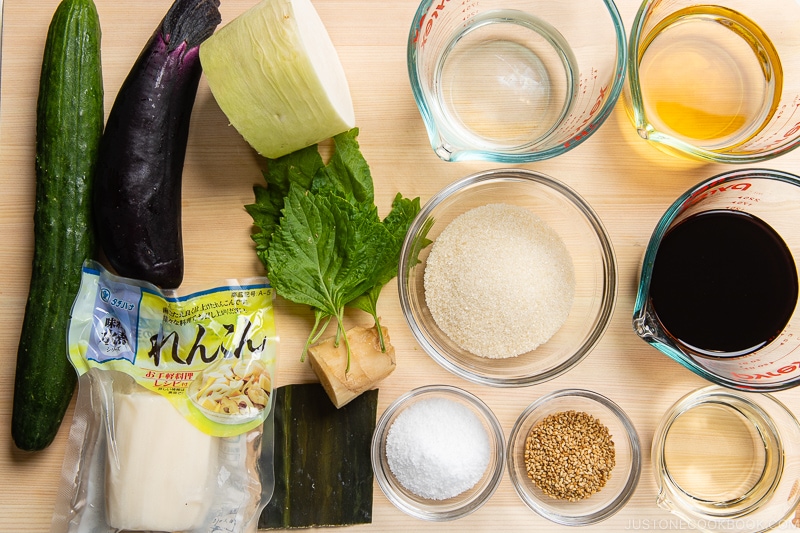
To Prepare the Vegetables
- Peel the 2 inches daikon radish. Cut it into quarters lengthwise and slice thinly.
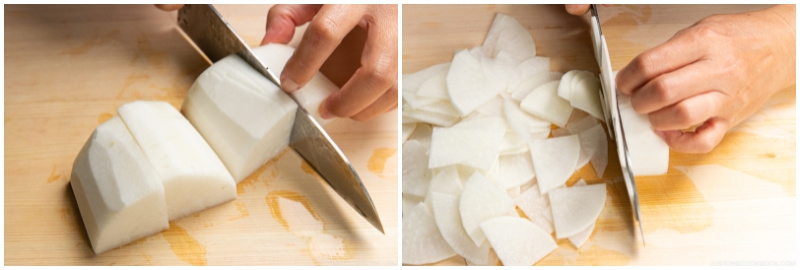
- Peel 2 Japanese or Persian cucumbers alternately to give a stripe pattern, then slice thinly.
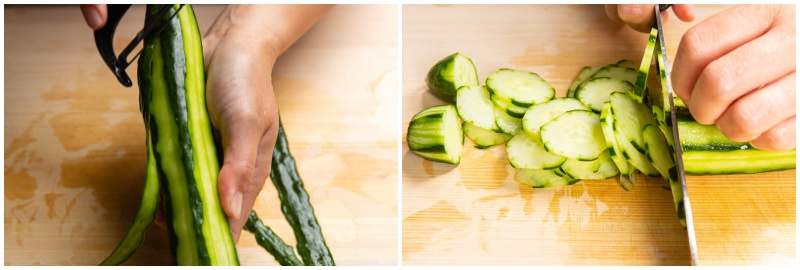
- Cut 1 lotus root (renkon) into quarters lengthwise and slice thinly. I used a packaged, pre-boiled lotus root; if your lotus root is raw, you can quickly blanch it until just tender.
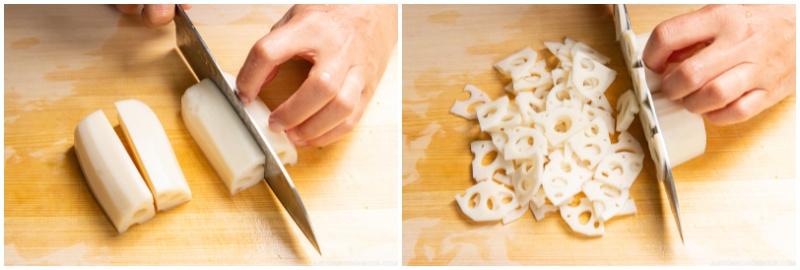
- Peel 1 Japanese eggplant. (I recommend peeling the skin completely. If some skin remains, the skin will discolor and the fukujinzuke will not have a good color). Cut the eggplant in half lengthwise and slice thinly.
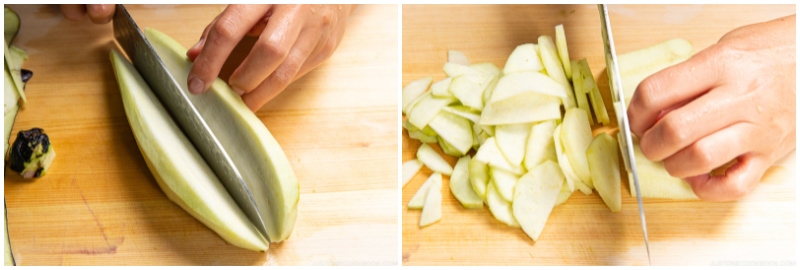
- With a knife or spoon, scrape off the skin of 1 knob young ginger. Cut it into thin slabs and thin julienned strips.
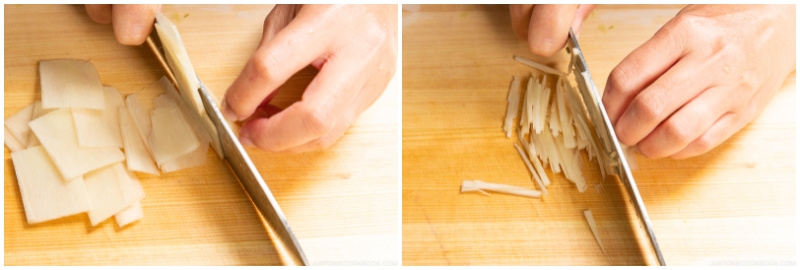
- Put an empty large bowl on a kitchen scale and put all the chopped vegetables in the bowl. Check the weight (I have 675 g).
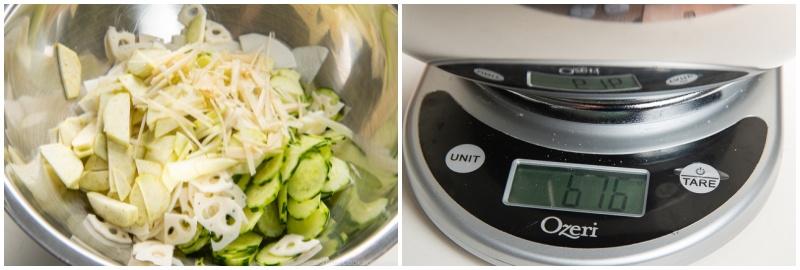
- You will need 3% of the total weight of your vegetables in kosher salt. For my 675 g of vegetables, I used 20 g (roughly 2 Tbsp). Calculate and measure the Diamond Crystal kosher salt you need. Sprinkle the measured salt on the vegetables and knead them with your hand. Set aside for 20 minutes.
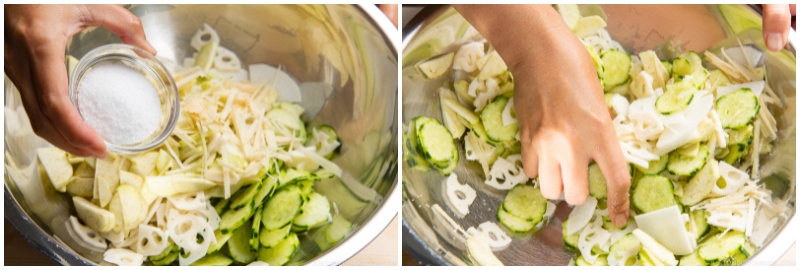
To Prepare the Pickling Solution
- Combine ½ cup soy sauce, ½ cup mirin, 6 Tbsp rice vinegar (unseasoned), and ½ cup water.
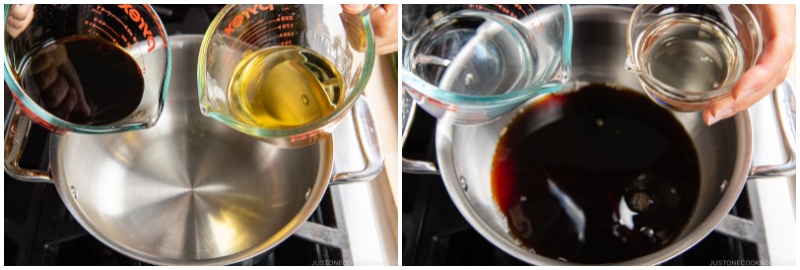
- Add 1 piece kombu and 6 Tbsp sugar. Mix well and bring it to a boil.
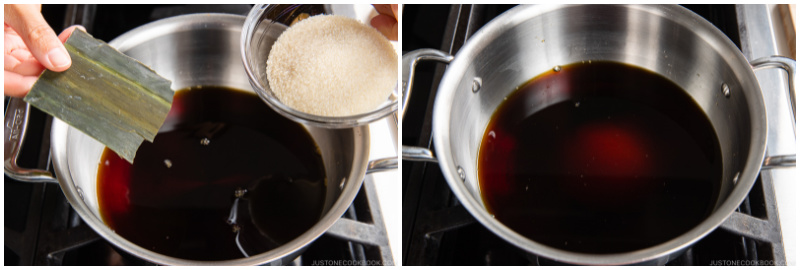
- When it‘s about to boil, remove the kombu (and reserve it to make Simmered Kombu or Homemade Furikake). Turn off the heat and set it aside.
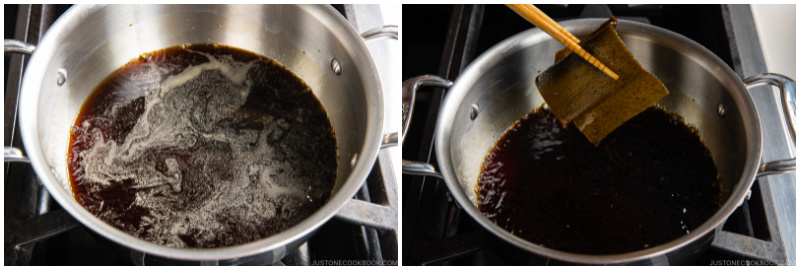
To Drain the Vegetables
- After 20 minutes, put the vegetables into a large sieve (colander) and rinse off the salt under cold running water.
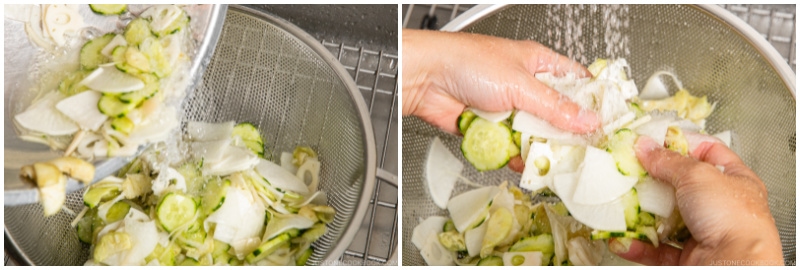
- Squeeze the vegetables to drain the water and transfer back to the clean bowl.
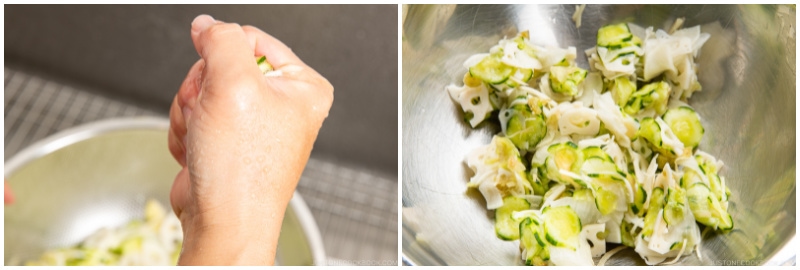
- Roll up 5 shiso leaves (perilla/ooba) and cut them into thin julienned strips. Add to the squeezed vegetables in the bowl.
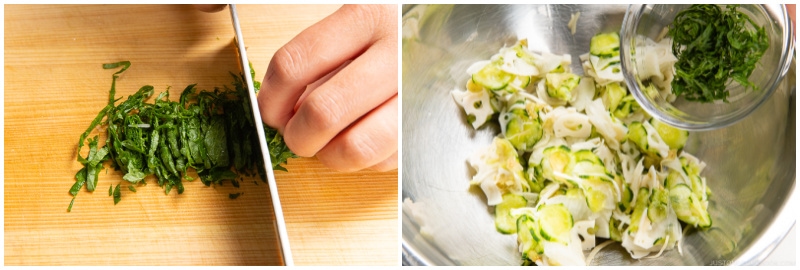
To Cook the Vegetables
- Bring the pickling solution to a boil again and add the vegetables.
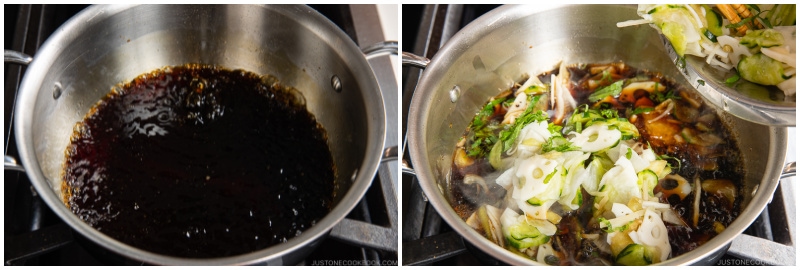
- Add ½ Tbsp toasted white sesame seeds and make sure the vegetables are well submerged. Cook for 30 to 60 seconds. I like to keep my vegetables crunchy, so I usually cook for just 30 seconds.
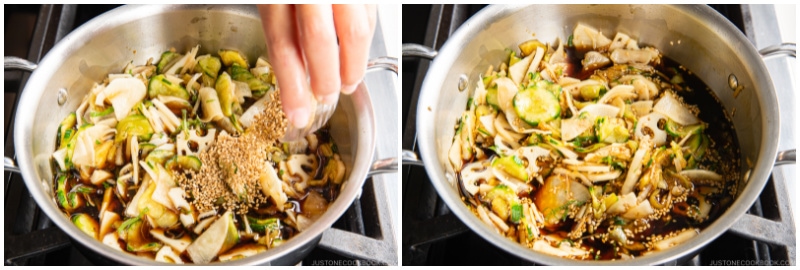
- Drain the vegetables and transfer them to the bowl.
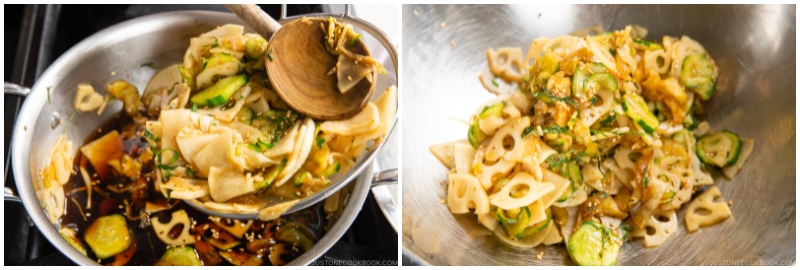
- Put any excess liquid in the bowl back into the pot. Over low heat, reduce the pickling solution for 5–10 minutes (so the flavor will intensify).
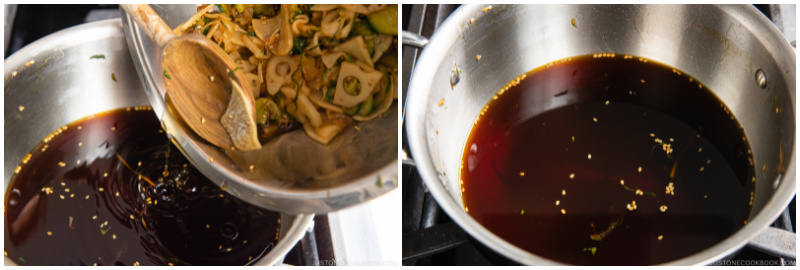
- Transfer the vegetables into airtight jars (I used three 1-cup Weck jars) and add the pickling solution to cover the vegetables. Put the Fukujinzuke in the refrigerator and let it marinate overnight. Enjoy!
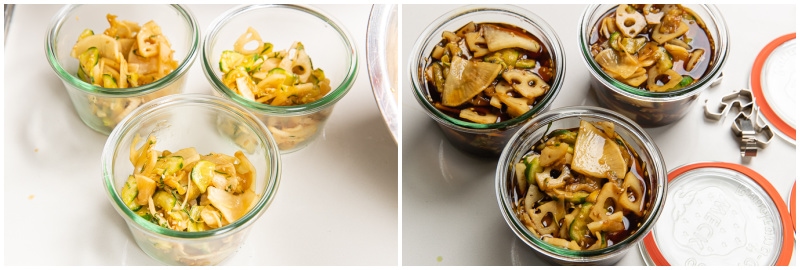
To Store
- You can keep the Fukujinzuke in an airtight container and store it in the refrigerator for up to 5–7 days and in the freezer for a month. Use a clean utensil to take out the portion you will eat. Tsukemono in general is salty, but if you are worried, you can drain the liquid after a day or two. You cannot reuse this to make more Fukujinzuke because the liquid is already diluted with moisture from the vegetables.
Nutrition
Did you make this recipe?
Tag @justonecookbook on Instagram so we can see your delicious creation!


